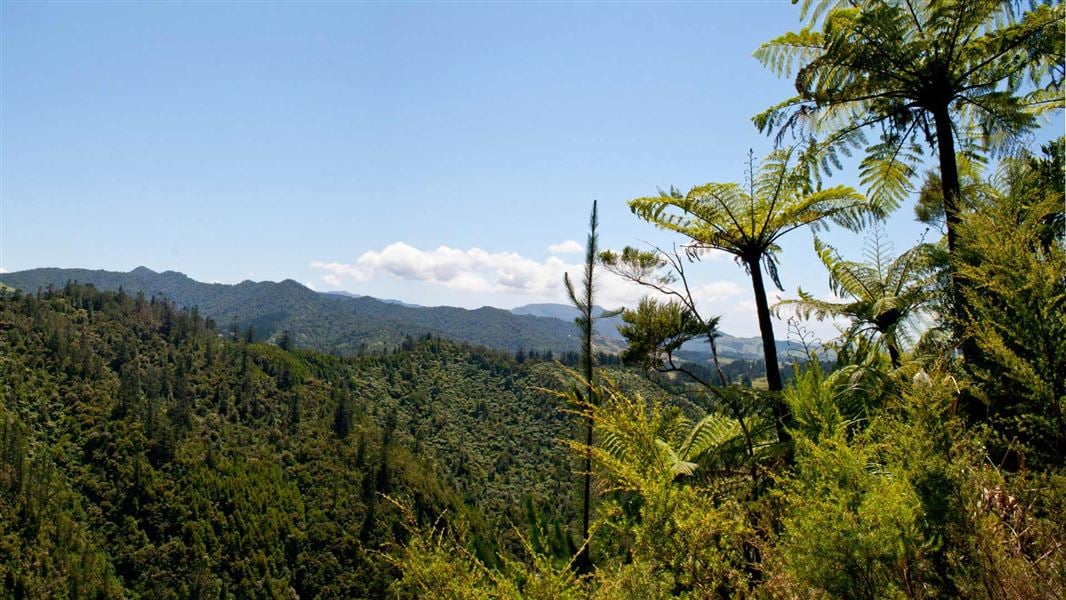
Introduction
$19 million will be invested over four years in the Kaimai-Mamaku Ranges Forest Restoration Project with approximately 60 jobs expected to be created.Date: 15 September 2020Source: Office of the Minister of Conservation
The Minister of Conservation Eugenie Sage has announced a $19 million investment over four years in an important forest restoration project involving a partnership between the Department of Conservation, iwi/hapū, the Bay of Plenty and Waikato Regional Councils, community conservation groups and organisations such as Forest and Bird across the Bay of Plenty and Waikato.
The Kaimai-Mamaku Ranges Forest Restoration Project comprises six areas or ecological hubs covering more than 240,000 hectares from Te Aroha to Tokoroa, with specific conservation goals for each area.
“The $19 million in funding and the pest and predator control work it enables will help protect rare species including the Te Aroha stag beetle, kōkako and kiwi along with long tailed bats and precious kauri trees,” said Eugenie Sage.
Approximately 60 jobs are expected to be created through the investment over four years, which is part of the Government’s $1.3 billion Jobs for Nature programme.
“This is a large area which extends ki uta ki tai, from mountains to sea and which has been very badly affected by introduced pests such as goats, possums and rats, and in some places high browsing pressure from red deer.”
“This browsing and predation pressure has created a crisis for the ngahere/forest. Browsing has destroyed the understorey of shrubs and seedlings and the forest’s ability to regenerate itself.”
Ramping up efforts to remove rats, stoats and possums through bait stations and trapping and other control methods as well as controlling goats is the initial focus for the restoration effort.
Kaimai-Mamaku is a special area because of the diversity of tree species. It is the major water catchment for the western Bay of Plenty as well as a significant area for recreation.
It contains kauri stands that are currently considered to be free of kauri dieback disease which has been affected other kauri forests.
“It’s important we act now to rebuild the forest, remove pests that damage it, and protect these taonga species. We’ve already lost kākāriki/parakeet; hihi/stitchbird, whio/blue duck, weka, tieke/ saddleback and taiko/petrel from these areas.”
“Healthy forests are a key natural assets for the Bay of Plenty region providing economic, cultural, and recreational opportunities as well as being a source of clean water and carbon storage and being important for their own sake.
“The Forum involving local and central government agencies, iwi/hapū, community conservation groups, Forest & Bird, NZ Deerstalkers Association, primary industries and the power industry has made an excellent start on this project over the past few years. I hope to see this project grow, provide jobs and help people reconnect with the whenua and as kaitiaki in the ngahere o Kaimai-Mamaku,” said Eugenie Sage.
On top of the $19 million Jobs for Nature funding, the Bay of Plenty Regional Council is contributing $1.5 million over five years into animal pest control on public conservation land which is starting in 2020/21.
Background information
The Manaaki Kaimai Mamaku Forum was established in 2009 as an initial relationship between the Department of Conservation/Te Papa Atawhai; Bay of Plenty Regional Council; Waikato Regional Council and the New Zealand Landcare Trust.
It has a recently established a Trust structure and is committed to a co-governing relationship with a strong emphasis on collaboration and partnerships with the iwi and hapu associated with the Kaimai-Mamuku Ranges.
The Forum has focused on developing a large scale restoration project.
In June 2020 a Pest Management Discussion Document “towards Thriving Kaimaku Forests” was released by the Manaaki Kaimai Mamuku Forum.
Contact
For media enquiries contact:
Email: media@doc.govt.nz